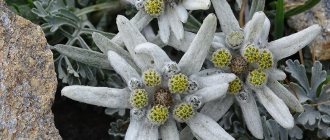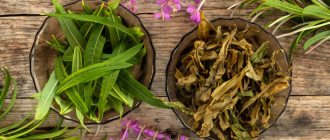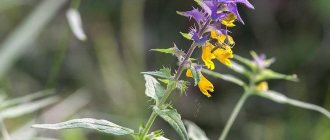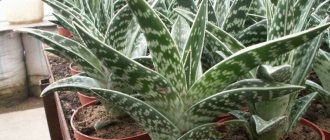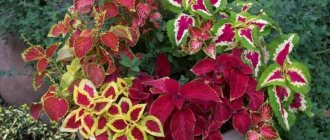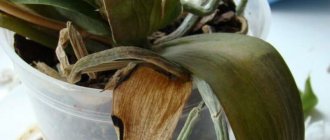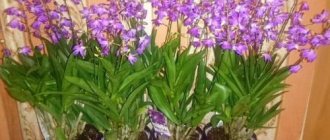Orchids are associated with the tropics, where it is warm all year round and there is often heavy rain. For most of us, the fact that orchids grow not only in temperate latitudes, but also in the harsh Siberian climate is an unexpected discovery. Alexander Dubynin from the Central Siberian Botanical Garden SB RAS at the request of N + 1
talks about a discovery that was already unexpected for scientists - a real “reserve” of orchids, which was discovered by a school teacher from the village of Linevo near Novosibirsk.
The association with the tropics is generally fair: orchids, one of the most ancient families of monocots (according to modern estimates, more than 60 million years old), have their maximum diversity in tropical forests with a short dry season and a long rainy season. Of the 28 thousand species of orchids known to science, 99.6 percent live in the tropics.
But in general, the orchid can be found even beyond the Arctic Circle. Ladyanum multifidus, for example, can be found in Taimyr, and green hemlock in Norway.
Map of photographic observations of orchids on Earth
Source: iNaturalist.com
Share
Orchids of temperate latitudes are perennial terrestrial herbaceous plants with powerful rhizomes or rounded tubers (from the ancient Greek oρχις - testicle). Their underground organs are often located quite deep underground, sometimes up to half a meter deep. This helps orchids survive in harsh climates and fires.
Orchids in Russia
Forest orchids of Russia differ in appearance from their tropical relatives, but are no less interesting and beautiful upon closer examination. We may have met them in the wild, but we didn’t even think about what family the plants belong to. There are 136 species of orchids growing in the country (photos and names of some of them will be given in the article). They can be found on the edges and clearings, in wetlands and meadows. These are lyubka bifolia, yarthysh, lady's slipper, calypso bulbous, marsh moth, and spreading orchis. Almost all northern forest orchids are listed in the Red Book. They even grow in the Leningrad, Novgorod and Pskov regions.
What species are found in the Leningrad region?
In the northern zone, surprisingly, a large number of orchids grow. Another thing is that this number is constantly decreasing. These flowers are vulnerable and capricious; they do not like attention from people. They love constancy, and there is almost none of it in the modern world: people build roads, cut down forests.
Despite environmental problems, the following grow in the forests of the Leningrad region:
- Baltic palmate root;
- swamp napkin;
- three-cut rook;
- Goodeyera repens;
- Komarnikov Kokushnik;
- oval cache.
The structure of orchids
Forest orchids of the middle zone have common characteristics characteristic of representatives of this family - this is the structure of the root system and flowers. The inflorescence consists of three leaves and three sepals. Most often, the petals are brighter in color than the sepals. But this phenomenon does not always happen. The lip of the flower is a landing place for insects, and therefore it always has a bright color.
The roots of forest orchids are very fragile on the inside, but on the outside they are reliably protected by a thick layer of tissue consisting of dead tissue that has a high absorbency. Thanks to this, the plant receives the necessary nutrition. Orchid roots have the amazing ability to form a fungus - mycorrhiza. A complex mechanism of exchange of substances occurs between the plant and the fungus, which they cannot synthesize on their own. It is for this reason that replanting orchid plants is not always successful, even with specialists. Orchids do not survive without their fungal companion; they either die immediately or after a while.
Is it possible to grow them at home?
Many plant lovers are interested in whether wild northern orchids can be grown on a windowsill. The answer is clear: no! Only tropical orchids are suitable for home use.
Forest flowers require a cold winter - a warm apartment will not suit them in the winter months. And one more point: the root system of plants forms a complex interaction with the fungus, which supplies them with useful substances. And it is this fungus that helps increase seed germination. At home, in sterile soil, the seeds are unlikely to sprout.
Lady's slipper
Lady's slipper - the most beautiful forest orchids of the northern forests. The flower is so charming that it could actually be dedicated to the goddess of beauty and love. It was this type of orchid that was the first to be protected in Europe at the end of the nineteenth century. The plant escapes from annoying animals with the help of its caustic juice, which makes it completely tasteless. But you can’t easily protect yourself from people who like to pick beautiful flowers. It’s hard to imagine, but the plant blooms only in its eighteenth year of life. Therefore, it is not surprising that it is now difficult to find lady’s slippers in the wild.
The genus slipper has about 50 species of orchids (photos and names of some of them are given in the article). They are common in Europe, Asia, North and South America. Only four varieties grow in Russia - spotted, true, large-flowered, etc.
Lady's slipper has a bright yellow lip and very dark purple petals. The shape of the flower itself is very similar to a woman's shoe. The spectacular shape of the orchid and bright color make the plant look like a butterfly.
What species are found in the forests of the Moscow region?
A large number of wild orchids grow in the Moscow region. Botanists claim that not so long ago, in the 50s of the twentieth century, entire glades of forests near Moscow were covered with thickets of lady's slippers.
Now vulnerable shoes are very difficult to find in the Moscow region, but they grow beautifully:
- broad-leaved napkin;
- Lyubka bifolia;
- spotted palmate root.
Legends about a beautiful flower
A very interesting legend is associated with this plant of the orchid family. Once upon a time, in one fairy-tale country, butterflies landed on a plant and could no longer fly away, because they turned into beautiful flowers.
But the legend of ancient Greek mythology tells how Venus’s shoes turned into a beautiful flower. Adonis and Venus were caught in a thunderstorm and hid from the weather in a secluded place. And the goddess’s shoe remained lying on the ground. At this time, a man passed by and saw a golden shoe. As soon as he decided to pick it up and extended his hand, it turned into a flower that looked like a shoe.
Medicinal properties
In addition to their mesmerizing beauty, orchids are also famous for their medicinal properties. Traditional medicine has long been using orchids in its recipes; these wonderful plants have a number of medicinal properties: antitoxic, anti-inflammatory, enveloping.
Tubers of Lyubka and Orchis are dried and ground into powder, from which various potions are made. These drugs are prescribed for gastritis and poisoning.
They can also help with inflammatory processes of the genitourinary system. The drug has been widely used in the treatment of:
- toothache;
- fever;
- convulsions;
- diarrhea;
- local inflammation;
- shallow wounds.
Orchids are wonderful plants that have incredible beauty and a number of healing properties. This is a real decoration not only of Russian landscapes, but of the entire planet as a whole, so it is necessary to treat these plants with care.
Lyubka bifolia
Another forest orchid is Lyubka bifolia. The flowering plant has a very graceful appearance. On a thin stem there is a spike of white flowers. Near the ground itself there are two sheets opposite each other. By them you can recognize the plant even when it is not blooming. It is worth noting that specimens with two leaves are flowering, and those that have only one basal leaf are non-flowering. During flowering, Lyubka bifolia exudes a stunning aroma, which is especially strong in the morning and evening hours. For this, the plant was popularly called night violet, although it has nothing to do with violets themselves.
The flowering of the plant itself cannot be called beautiful, since the small white flowers are equipped with spurs, because of which the inflorescence appears shaggy from a distance. Each of them contains nectar, which attracts insects. Lyubka bifolia reproduces exclusively by seeds, of which a lot ripen. But, like all orchids, they germinate with great difficulty. A flowering plant attracts the attention of people who pick off flower stalks without thinking that in this way they completely deprive the forest orchid of the opportunity to reproduce. Currently, Lyubka bifolia is on the verge of extinction.
Features of development
All orchids have a complex and long development cycle. Wild orchids live for about 30 years.
Despite this, you cannot see flowering every year. For example, Lyubka bifolia rests after six years of flowering.
Once in the ground, wild orchid seeds can sprout only after four years and only if there are certain fungi in the soil that supply them with all the nutrients necessary for germination.
After the first leaves appear, the wild orchid begins to bloom only ten years later.
Orchis spotted
Another forest orchid is the spotted orchis. This species is the most common representative of the orchid family. There are about 24 varieties of orchis growing in Russia. They all differ in the color of flowers, foliage, and the structure of the root system.
The most common species are: spotted orchis. The perennial plant can be seen in forests at the end of June or in July, during its flowering period. Orchis prefers wet glades, forest swamps and shrubs. It is very beautiful during the flowering period. A description of the spotted orchis would be incomplete without talking about its white or light purple flowers. Which are collected in ears. The leaves of the plant have light gray spots, which is where its name comes from. Flowers secrete nectar, which attracts insects that pollinate it, causing the seeds to ripen. Orchis also reproduces only by seeds. The roots of the plant look like flattened cones. If you dig them up during the flowering period, you will find two tubers, one of which is brown in color, and the second is young and light. It is from this that a young plant emerges the next year.
Orchis has long been used as a remedy. Its roots are valuable. They have incredible nutritional value. For example, for an adult, in the absence of other food, it is enough to eat 40 grams of orchis roots, dried into powder and diluted with water. Other species are also used in folk medicine: helmet orchis (Orchis militaris L.), male orchis (Orchis mascula L.), marsh orchis (Orchis palustris L.) and others... Another name for the species is “Scutellaria”, it emphasizes the shape of the upper flower petal. Therefore, the scientific name of the species is “helmeted orchis” (Orchis militaris L.).
Northern varieties of wild plants
Amateur gardeners often wonder whether it is possible to transfer these delightful plants to their garden plot. Let them please the eye in flower beds or beds!
Attention! Perhaps it would be very cool to grow calypso or lyubka yourself. Unfortunately, this is extremely difficult. Botanical connoisseurs know that all members of the orchid family are extremely capricious creatures.
And even northern flowers, despite their frost resistance, are extremely demanding on growing conditions. They need exactly the temperature, humidity, etc. in which they grow! As a rule, these are the surroundings of small swamps or peat bogs, lowlands, wet areas in shaded clearings in deep forests. It is extremely difficult to create such conditions in the garden.
There are several types of wild orchids that can grow in summer cottages (but not at home). Among them:
- fingerroot;
- garden variety of lady's slipper;
- dremlik.
Dremlik grows well in the garden. He likes partial shade, so he will do well under the canopy of trees.
The nest is real
This plant always stands out from the crowd of others because it has a peculiar brown color. The stem of the true nest rises from the ground, and in its lower part there are leaf rudiments resembling scales. The inflorescence of the plant consists of fifteen light brown flowers. This forest orchid got its name because of the intertwining of roots that resembles a bird's nest. The nest feeds on rotting plant remains. It does not need light at all, since it has no chlorophyll. Finding such a plant in the forest is very rare. It grows one at a time, not in groups. The nesting bird reproduces only by seeds, like other members of the family.
Application in garden decoration
Since orchis is a rare plant, many gardeners want to plant it on their site, thereby giving it originality. Orchids have found use in decorating rock gardens and rockeries. Northern orchids look no less beautiful on the banks of artificial reservoirs. Orchis are also planted next to conifers. The plant should not be used to form mixed flower beds, since it is not adapted to this type of cultivation. But along the paths and alleys the culture looks very beautiful.
Goodyear repens
Goodyear creeping is a very rare plant that is found in pine forests among mosses. The leaves of the plant are collected in a rosette and look very much like plantain foliage. But at the same time they are much smaller and decorated with a mesh pattern. Goodyear also belongs to the orchid family. It blooms in mid-summer. The stem grows from a rosette, its height is 15-20 centimeters. And the top is decorated with white flowers. By the end of summer, seeds ripen in small boxes of the plant. They are so small that they are not even visible to the naked eye.
Unlike other plants, they consist of homogeneous tissue, and there are no root primordia or leaves in them. Goodyear has long creeping rhizomes, the surface of which is covered with a dense layer of mushroom threads. Thanks to them, the plant absorbs moisture from the soil. Such close cooperation between plant and fungi is called symbiosis. Gudera cannot grow without mycorrhiza. Even the seeds of a plant will never take root without a fungus. Due to the fact that working with our forest orchids is very difficult, they have practically not been touched by the hands of breeders, so they live the way nature created them millions of years ago.
Refugium in Linevo
Several years ago, not far from the village of Linevo in the Iskitimsky district of the Novosibirsk region, local biology teacher Yuri Panov accidentally discovered an amazing place where terrestrial orchids grow together. In a small area of 40 hectares, 13 species were discovered (out of 30 species characteristic of the Novosibirsk region).
Since 2015, specialists from the Central Siberian Botanical Garden began studying the “school orchid reserve” (as the teacher and his students called it). We mainly studied the morphological and genetic characteristics of three species of the genus Lady's slipper ( Cypripedium
).
In the Linevsky area they live side by side. Also found here was the swollen lady's slipper ( C. ventricosum
), a natural hybrid of the pink-red lady's slipper (
C. macranthos
) and the yellow lady's slipper (
C. calceolus
).
Slipper ( Cypripedium calceolus
) grows next to the large-flowered lady's slipper and steadily forms a hybrid - the lady's shoe is swollen
Alexander Dubynin
Share
It was important for us to clarify the list of orchid species and the boundaries of their habitats, assess the threats and natural disturbance regime, and formulate proposals for special protection of the “reserve.” We carefully photographed all points with orchids, verified photo observations and posted them on the iNaturalist platform. Once research status was obtained, these data were automatically duplicated in the Global Biodiversity Information Facility (GBIF).
Horticultural crops
And yet the beauty of orchids has not gone unnoticed by gardeners. Among the forest orchids, there are still some that can be grown in home plots. These include the forest orchid - leopard lily. A beautiful exotic plant can be grown from seeds, which some nurseries sell online. The plant's homeland is China, but it takes root well in our gardens. Belamkanda chinensis, also known as forest orchid and leopard lily, has a very long flowering period. The plant is a perennial and reproduces well in gardens by self-sowing.
It came to be called the leopard lily due to the presence of dark orange spots on the beautiful flowers. The plant is also called blackberry lily because its seeds resemble these berries. In general, the culture is unique and there is nothing else similar to it in the world. The plant is incredibly common throughout China. In addition, it can be seen in Indonesia, Japan, Northern India and Eastern Siberia. In nature, the plant grows in sparse forests, on rocky cliffs, on the slopes of rice fields and even along roadsides.
Belamkanda was brought to us from East Asia. Now it is grown in gardens as an ornamental plant with graceful, beautiful flowers. The perennial plant has yellow-orange or reddish flowers with characteristic dark dots. Moreover, they are collected in large inflorescences in the form of wide brushes. The blossomed flower reaches five to seven centimeters in diameter.
In our latitudes, the orchid begins to bloom at the end of July. It pleases with its beauty until the end of August, and sometimes until the beginning of September. An interesting fact is that each flower has a very short life. It only blooms for a couple of hours. It opens in the first half of the day, and begins to fade closer to sunset. Externally, fading simply looks like curling. And the next day, in the morning, new flowers are already opening on the stem. Here is such a unique plant - leopard orchid.
In autumn, the plant ripens seeds in capsules that look like blackberries. Belamkanda reproduces well by dividing rhizomes, as well as by seeds, which are grown even indoors for later replanting in open ground.
Taiga diversity
About 40 species of orchids live in Siberia. It is difficult even for specialists to name the exact number of species, because, as it turned out, terrestrial orchids under natural conditions often form interspecific and sometimes intergeneric hybrids. In addition, the taxonomy of some groups is very complex - the combination of several known species into one or the identification of new species is still not uncommon.
Orchids in Siberia do not bloom at the same time. The earliest include such an elegant and very rare plant as bulbous calypso. It blooms around mid-May. Further, in the beginning - mid-June, the flowering of slippers, species from the genus Dimitricus, Orchis capulata, Lyubka bifolia, and Kokushnik mosquito begins to bloom. Next, the marsh napkin throws out flower stalks, and a little later - the winter napkin.
Of course, the main thing that delights anyone who sees an orchid in nature is a bright large flower or a beautiful inflorescence-spike if the flower itself is small. Another mystery of Siberian orchids is connected with the structure and pollination of a flower.
Bumblebee on a lady's slipper flower ( Cypripedium macranthos
)
Alexander Dubynin
Share
Having lured an insect in various ways, and it could be anyone - a bumblebee, a bee, a beetle, a butterfly and even an ant, the orchid “rewards” it with a special formation -
pollinium
. For example, Fuchs's digitigrade has horns. When an insect crawls inside a flower, the pollinium sticks to its head or chest and travels like that. The pollinium contains pollen, which the insect, flying in search of nectar, carries on the stigma of a flower of another plant.
Orchids attract pollinators not only with their shape and color, but also with their scent. Lyubka bifolia is famous for this - due to the fact that it smells fragrant in the dark, it is also called “night violet” - and the inconspicuous-looking browberry.
Broad-leaved napkin (Epipactis helleborine)
Alexander Dubynin
Caring for a wild orchid
Spotted orchis does not like waterlogged soils. During feeding, it is important to ensure that the plant does not get fresh manure. It is recommended to mulch the soil; the best option for this is pine needles.
If orchis grows in a sunny area, it is worth watering. Otherwise, the plant is unpretentious, does not require special care, and is not susceptible to pests and diseases. Loves semi-wild areas of the garden.
Propagated by root division, seeds, and sometimes self-sowing. Doesn't like weeds. Tolerates winter without shelter.
Description and distinctive features
Externally, they are of course diverse and have significant differences. But the characteristics and structure have common features, not much different from those typical of orchids.
The flowers are bilaterally symmetrical, with a shape typical of all orchids - three petals, three sepals and a brightly colored lip, which attracts pollinating insects with its color. In some varieties the petals are brighter than the sepals, while in some it is the opposite.
The roots are quite fragile, covered with a layer of velamen, which not only serves as protective properties, but is also capable, due to its spongy structure consisting of dead tissue, of absorbing and retaining moisture and nutrients.
Some species, in addition to a small number of roots, have tubers that serve as a “storage base” for the plant in winter.
A special place for northern orchids is occupied by their root system , which has the function of forming mycorrhiza with symbiotic fungi. It is this connection that helps them synthesize and obtain nutrients that they are not able to obtain on their own.
Therefore, replanting a plant from its natural environment causes difficulties for gardeners; the plant simply dies in the first year of life, losing contact with mushrooms.
Symbiosis of mushrooms and orchids.
The beauty of some species is not much inferior to their tropical relatives, and their tubers have medicinal properties, which negatively affects the population of northern orchids.
Attention! Digging, picking, and using tubers poses a serious threat to their survival.
Use in medicine
The root consists of two tubers. The most valuable of them is juicy and young. A special powder is prepared from salep tubers in the pharmacy.
Salep mucus is used to treat:
- hyperacid gastritis;
- food poisoning;
- stomach ulcer;
- cystitis;
- gastroenteritis;
- dysentery;
- colitis;
- diarrhea;
- respiratory diseases of the nasopharynx.
In case of intoxication or poisoning, it is recommended to use spotted, male or helmeted orchis.
Orchis tubers are used externally for abscesses. First they are ground to a powder. Then mixed with pork fat or steamed in milk. Tubers and salep are also used to stimulate hair growth and as a relief from toothache.
Among other things, orchis is considered an excellent remedy for nervous exhaustion, sexual impotence, and weakness caused by debilitating long-term illnesses. The use of salep is recommended for those who have suffered severe bleeding, suffer from intestinal catarrh, or suffer from tuberculosis. The plant can also cure female uterine diseases and bladder catarrh.
Description of the plant
Orchis is most widespread in the Northern Hemisphere and is actively found in Southern and Central Europe. A large number of these plants have been recorded in the Crimea and the Caucasus. Orchis is even listed in the Red Book of Russia. The culture is distinguished by leafy simple stems, the height of which is up to 50 centimeters. 2 root seals are formed on the rhizome. The leaves are lanceolate-shaped, narrowed to the petiole. The flowers are small, have different colors - from lilac, pink to dark cherry. The inflorescence forms a spikelet, 9-15 centimeters long, consisting of a large number of miniature flowers.
Burnt Orchis (Orchis ustulata)
Forest orchid palmatera spotted
Reference
Spotted fingerroot (Dactylorhiza maculata) is a plant of the orchid family. Distributed in the forest zone of Europe, partly in Asia. In European Russia it is especially common in the north, northwest, and central non-chernozem regions. Reaches Eastern Siberia. Habitats: coniferous-deciduous forests with normal moisture, clearings in them, thickets of bushes. Prefers acidic soils.
Why was it renamed?
How and why did the spotted orchis become the spotted palmate root?
In an article about Lyubka bifolia (see here), I already wrote that orchids are perennial plants that develop two root tubers in the soil. One of them is from last year. The supply of nutrients accumulated in it last summer ensures the rapid development of above-ground organs, flowering and fruiting of the plant.
By the time of flowering, this root tuber has almost used up its reserves. He looks wrinkled. And by the end of summer it will die off.
But in spring a new tuber grows to replace it. Over the summer it will store nutrients to use next year.
So, in plants of the genus Orchis (Orchis), these root tubers are ovoid in shape. What about the fingerroot? In plants of the genus Dactylorhiza, the tubers have two or three finger-like projections. Such a “fist” with extended fingers!
That's why it's a palm root! The word is one of the variants of translation into Russian of the Latin “dactyloriza”. The name spotted fingerroot is also used. And without further ado, the flower is called dactylorhiza.
We’ll talk about why our ancestors called the plant “cuckoo tears” a little later.
Characteristics of spotted palmate root
What features of external appearance distinguish spotted palmate root?
It has a special flower, mostly similar to the flowers of other orchids. The flower is irregular, its petals are of different shapes. And one of them especially “distinguished himself”!
The front part of this special petal is elongated in the manner of a protruding lip. That's why it's named like that. An elongated cylindrical spur is formed at the base of this petal. It contains a supply of nectar.
The lip of the spotted root is divided into three lobes. Moreover, the middle one is noticeably smaller than the side ones.
The color of the flower may vary between different plant specimens. Most often it is pale purple. But it can be purple and pink. This “chameleon flower” is far from simple!
On the lip, and on other petals, there are purple spots that merge into stripes. It’s as if some unknown sign, a hieroglyph, is inscribed on the flower!
This is indeed a sign. Not for us - for insects. Lip is a landing site for a bumblebee, bee or fly. Lines and spots are “landing marks”. Markings showing the insect the path to its cherished goal - nectar.
To get it, the bumblebee must drill through the wall of the spur. This can only be done by positioning yourself in a strictly certain way. So the “landing signs” guide the guest. After all, the plant also needs the pollinator to “stand up for loading”, as it should be!
And while the sweet tooth is busy extracting nectar - once! - and a pair of pollen bags (they are called polynia) are securely attached to his body. Having eaten, the pollinator flies from flower to flower and leaves its cargo somewhere.
The single flower of this northern orchid is too small to be clearly visible. Therefore, the flowers of the spotted root are collected in a rather dense spike-shaped inflorescence. Such a variegated ear can be seen from afar.
Another characteristic feature of fingerroot by which it can be identified is its leaves. In shape they are most similar to tulip leaves, only smaller.
There are few leaves. They sit on the stem alternately. The lower leaves are the largest. They are broadly lanceolate. They become taller and more pointed. Like a tulip, these leaves are dark green and not pubescent.
But round purple spots are clearly visible on them! It was this trait that gave the plant its specific name.
Why are these spots needed? Most likely, this is a way to get more heat. After all, the leaves of the spotted root appear at the end of spring, when it can still be quite cool. Thanks to dark spots on the leaves, the plant traps more heat from the sun.
Well-warmed leaves evaporate more water. In response, fibrous roots more actively absorb water and dissolved nutrients from the soil. The spotted palmate root settles only where there are no problems with soil moisture. No need to save!
These spots were considered to be traces of cuckoo tears! Which she apparently sheds while mourning her abandoned chicks.
But why are people so interested in the cuckoo's tears?! Let us remember that the cuckoo, in the minds of our ancestors, was the bird of things - therefore, revered.
On Green Christmastide, during Mermaid Week (this is the week preceding the Orthodox holiday of Trinity), girls went into the forest, wove wreaths, and danced in circles. They also addressed their songs to the cuckoo.
But the cuckoo is easy to hear in the forest, especially in the spring. But to see... So they turned to the grass, “marked” with her tears. They danced round dances around her and sang songs.
Spotted palmate root blooms in June – July. And in August, fruit boxes with many tiny seeds already ripen. Here is a photo of the fruit of this plant.
Like all orchids, these seeds do not contain a supply of nutrients. They are able to germinate and give rise to a new plant only in symbiosis with certain soil fungi. Therefore, most of the seeds will simply die. But there are so many of them that it is enough to preserve the species.
Mycorrhiza - a symbiosis with fungi - is also formed by an adult plant. By sharing some of the sugars formed during photosynthesis, the orchid receives nutrients from the soil from the fungi.
The spotted palmate root, unlike most northern orchids, is a relatively numerous and prosperous plant. This does not mean, of course, that you can treat it completely thoughtlessly - tear it off, dig it up beyond measure! This can destroy any plant, not just an orchid!
And well-being is very relative. Spotted palmate root is already included in the Red Books of the Moscow, Vladimir, Yaroslavl, Kaluga, Ryazan, and Smolensk regions.
And yet this is perhaps the only orchid that we can so far use in our practical interests. First of all, medical ones. With a caveat - where spotted palmate root still retains its abundance.
Preparing orchis for wintering
Despite its name, the wild orchid is not at all a heat-loving plant that is afraid of frost. Orchis overwinters well without winter shelter, even in the middle zone. But so that excess moisture does not affect the quality of wintering, and the plant better tolerates temperature changes during thaw periods, the bushes need to be prepared for cold weather.
As soon as the orchis begins to dry out on the eve of the first autumn cold, it is better to immediately cut off all above-ground parts of the plant to the ground. Do not wait until the shoots die off on their own, but feel free to carry out radical pruning. This way the rhizome will be better prepared for even the most unstable winters.
Description of the plant and types of orchis
This medicinal tuberous plant is a perennial from the Orchidaceae family, the erect stems of which grow up to 70 cm in height, depending on the species. Its leaves are narrow, dark green in color, in some varieties they are decorated with purple spots. In April, the herbaceous crop throws out hollow peduncles with spike-shaped inflorescences, on which up to fifty buds are formed, predominantly cherry or lilac in color.
The buds bloom for up to 10 days, exuding a delicate honey-vanilla aroma. From the moment of pollination, the petals quickly wither, after which the formation of seed pods begins. The root system of the plant consists of paired tubers (salep), which are widely used in folk medicine.
There are over 60 species of orchis. The Orchid family is relatively young, so there are difficulties with the classification of this crop due to the presence of several interspecific hybrids. We suggest considering the most famous plant species with a description:
- Male orchis (Vankova, armed, pine, female orchis). The height of the perennial is up to half a meter; there are purple spots at the base of the plant. The leaves, 15-35 mm wide, have a broadly lanceolate shape and reach 14 cm in length. The buds of this variety are small, the color of the petals ranges from pale violet to purple. Up to fifty flowers are borne on spike-shaped inflorescences.
- Orchis spotted (swamp-loving, Sudeten, serpentine, tears of the Virgin). Gardeners greatly value this variety because of its high decorative properties. Its distinctive feature is the dark spots decorating the lower part of the leaf and the three-lobed lips of light purple buds.
- Monkey orchis. The variety got its name due to the original lower lip of the flower, which is shaped like the body of a tiny monkey.
- Orchis capillaria. The height of the herbaceous perennial can reach up to 60 cm; from May to June the plant is decorated with dense multi-flowered spikes 8 cm long. The upper five perianth segments are located together, resembling a knight's helmet, the narrow lip is divided into segments.
- Orchis purpurea (largest). The stem of the flower is powerful, up to 1.2 cm thick, reaching 40-70 cm in height. The pale pink lip of the flower stands out against the background of the brown-purple or black-purple color of the upper helmet.
Other common flower varieties:
- Caucasian orchis;
- orchis dremlik;
- Italian orchis;
- swamp orchis;
- orchis fuchs.
Burnt orchis
